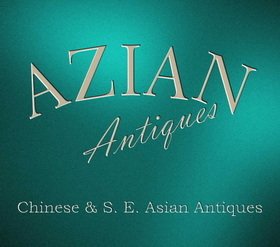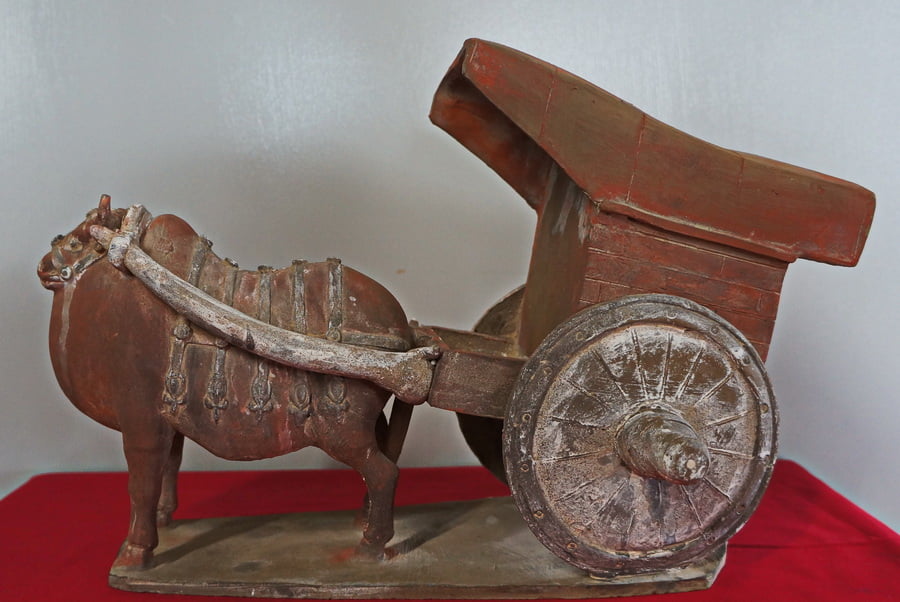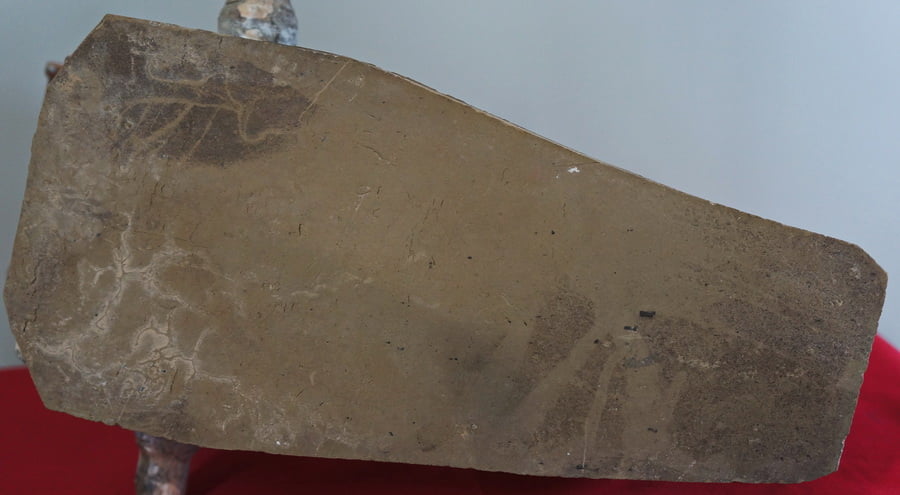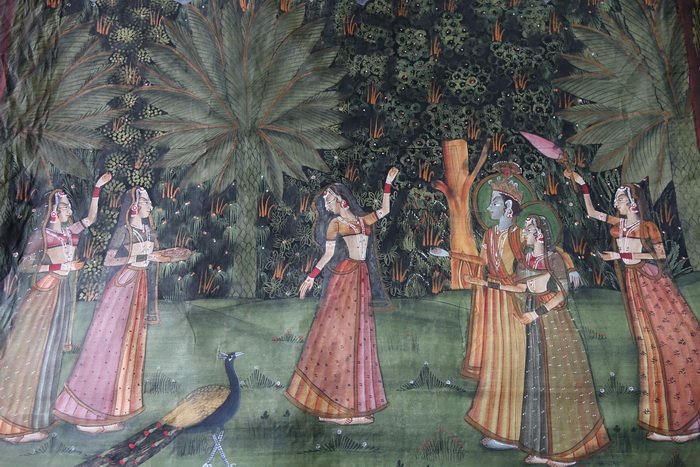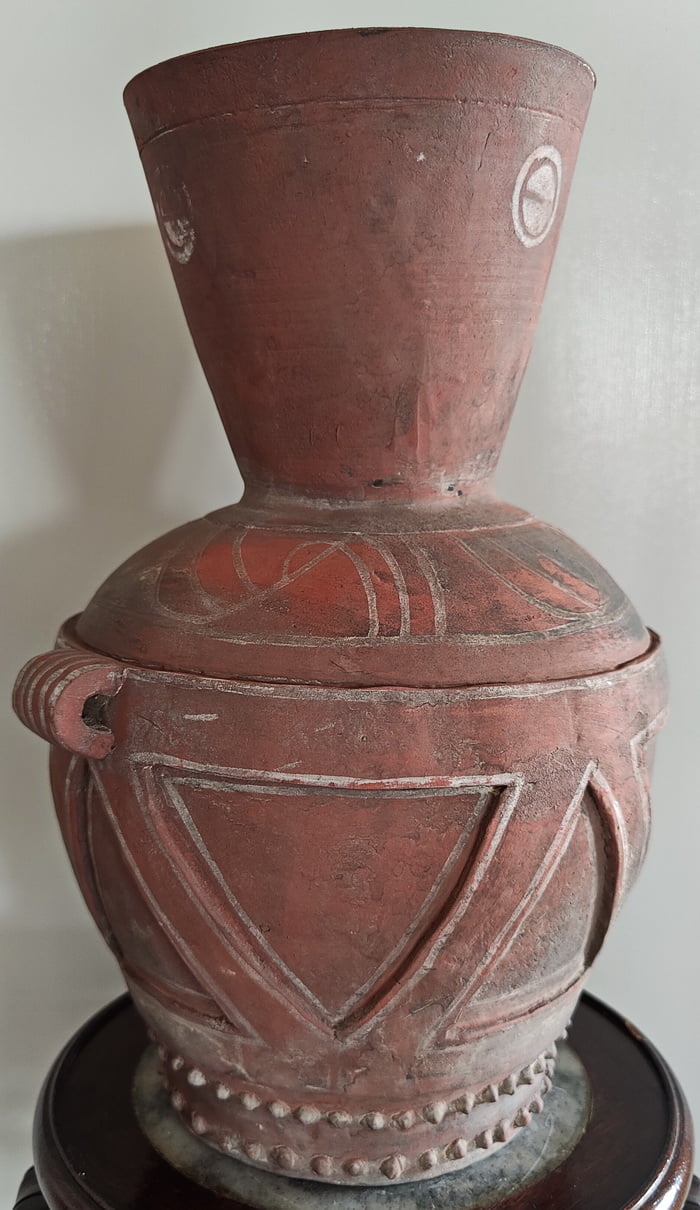Tang Dynasty Terracotta Buffalo and Cart was made specifically for burial purposes. The tips of the horns are broken, the base is cracked and one of the spokes on the cart was broken and repaired.
Earthenware and terracotta ming qi funerary objects excavated from ancient burial chambers in China opened a window in time to a wealth of information related to the customs and rituals of ancient Chinese funerary practices.
Read More
During the Han dynasty and up until the Ming dynasty, it became popular to place objects in the funerary chamber with the deceased These ming qi funerary objects can be represented in many different forms such as miniature eating utensils, utilitarian vessels, tables, chairs, animals such as camels, horses, dogs, and pigs as well as human figures and miniature granaries and houses.
These funerary offerings provide evidence of the customs and beliefs related to both the rich and the poor people who lived in ancient China. Before the Han dynasty, this was a practice reserved for wealthy persons. During the Han dynasty, the practice became popular with all classes of people, and a thriving industry evolved in the manufacture of Ming qi objects. (objects made specifically for funerary purposes).
The Chinese believe that the afterlife is just a continuation or an extension of their living existence, and by burying these objects with the deceased they would appease the soul of the departed and provide that for which he or she was attached or used during his lifetime, thus, ensuring a happy journey into the afterlife and beyond whilst ensuring they wouldn’t return to earth in the form of a “hungry ghost”.
A funerary object such as this terracotta buffalo and cart may have been representative of the deceased’s livelihood, he was possibly a farmer, using the buffalo to pull a plough to till the soil for planting crops.
Due to the expansion and development of China, many of these burial chambers have been exposed whilst excavating land for buildings and farms, others have been plundered over time.
We have described this as the Tang Dynasty, mainly because of the similarities to other Tang pieces.
